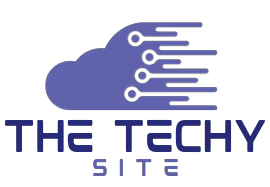The Cutting Edge Technology
Cutting edge technology refers to the most advanced and innovative technological developments or solutions available at a given time. It represents the forefront of technological progress and often implies that these technologies are on the leading edge of what is currently possible or achievable.
Understanding Cutting-Edge Technology
The term “cutting edge technology” refers to innovations and advancements that push the boundaries of what was previously thought possible. These breakthroughs often redefine industries, offering new solutions and capabilities. At the heart of cutting-edge technology lies extensive research and development (R&D) efforts. Organizations invest heavily in R&D to stay at the forefront of technological progress. This involves exploring uncharted territory, taking calculated risks, and fostering innovation. Read about Enterprise Technology
Transforming Industries
Precision Medicine
Cutting-edge technology is revolutionizing healthcare through precision medicine. By analyzing an individual’s genetic makeup, doctors can tailor treatment plans, maximizing effectiveness and minimizing side effects.
Telemedicine
Telemedicine is making healthcare more accessible than ever before. Virtual doctor visits and remote monitoring are becoming standard practice, offering convenience and reducing healthcare costs.
Also read the Article: What is Technology Determinism
Transportation

Autonomous Vehicles
Self-driving cars are a prime example of cutting edge technology in transportation. These vehicles use advanced sensors and artificial intelligence to navigate safely, promising a future of safer roads and reduced traffic congestion.
Hyperloop and High-Speed Rail
Projects like the Hyperloop and high-speed rail systems are set to transform long-distance travel. With unprecedented speeds, these innovations could redefine our notions of commuting and transportation.
Virtual Reality (VR) and Augmented Reality (AR)
VR and AR technologies are taking entertainment to new heights. Whether it’s immersive gaming experiences or interactive storytelling, these innovations provide users with entirely new dimensions of entertainment.
3D Printing
Additive manufacturing, commonly known as 3D printing, is revolutionizing the manufacturing industry. It allows for the creation of complex and customized products with unmatched precision and efficiency.
Smart Factories
Smart factories are integrating cutting-edge technology to optimize production processes. With the Internet of Things (IoT) and automation, these facilities can respond dynamically to changing demands.
Quantum Computing: Unlocking Unprecedented Power
Quantum computing, often hailed as the holy grail of computation, holds immense potential. Traditional computers rely on bits as the fundamental unit of information, representing either a 0 or a 1. In contrast, quantum computers use quantum bits or qubits, which can exist in multiple states simultaneously. This property allows quantum computers to perform complex calculations at speeds unimaginable by classical computers.

Imagine solving complex scientific problems, optimizing supply chains, or revolutionizing cryptography in a fraction of the time it takes today. Quantum computing has the potential to tackle previously insurmountable challenges, from simulating molecular interactions for drug discovery to optimizing traffic flow in smart cities.
Biotechnology: A New Frontier in Healthcare
The field of biotechnology is advancing at a breathtaking pace, with the ability to reshape healthcare and beyond. Gene editing technologies like CRISPR-Cas9 offer the potential to treat genetic disorders, while synthetic biology enables the creation of entirely new organisms for various purposes.
In healthcare, precision medicine is becoming a reality, with treatments tailored to an individual’s genetic makeup. This approach promises to enhance the effectiveness of medications, reduce side effects, and improve overall patient outcomes.
Beyond healthcare, biotechnology is playing a crucial role in sustainable agriculture, environmental conservation, and even biofuels. It offers innovative solutions to some of our most pressing global challenges.
Artificial Intelligence: The Evolving Mind of Machines
Artificial Intelligence (AI) is no longer a futuristic concept but a fundamental part of our daily lives. AI algorithms analyze vast datasets, recognize patterns, and make predictions with remarkable accuracy. This technology is the driving force behind virtual assistants, autonomous vehicles, and even recommendations on streaming platforms.
In the coming years, AI will continue to infiltrate various industries. In healthcare, it will assist in diagnosing diseases and recommending treatments. In manufacturing, AI-powered robots will work alongside humans, increasing productivity and precision. In finance, AI will help detect fraudulent activities and optimize investment portfolios.
Responsible Adoption of Cutting-Edge Technology
While the potential of cutting-edge technology is awe-inspiring, it also comes with ethical and societal considerations. As these innovations become more integrated into our lives, it is crucial to address issues of privacy, security, and job displacement. Striking the right balance between innovation and responsibility will be paramount.
The Future of Cutting-Edge Technology
Quantum Computing
Quantum computers hold the promise of solving complex problems exponentially faster than traditional computers. From cryptography to drug discovery, their potential applications are boundless.
Advancements in biotechnology are unlocking new possibilities in healthcare, agriculture, and environmental preservation. Gene editing and synthetic biology are just a glimpse of what’s to come is continuously evolving, with applications ranging from chatbots and virtual assistants to autonomous drones and predictive analytics. The integration of AI into various industries is reshaping how we work and live.
Conclusion
The world of cutting-edge technology is a dynamic and ever-evolving landscape. From healthcare to transportation and entertainment to manufacturing, innovations are redefining industries and pushing the boundaries of human achievement. As we move forward, it is essential to embrace these advancements responsibly, ensuring they benefit society as a whole.
FAQs
1. What exactly is cutting-edge technology?
Cutting-edge technology refers to the latest and most advanced innovations that push the boundaries of what was previously possible, often redefining industries.
2. How is cutting-edge technology transforming healthcare?
Cutting-edge technology in healthcare includes precision medicine, telemedicine, and advanced diagnostic tools, improving patient care and accessibility.
3. What role does research and development play in cutting-edge technology?
Extensive research and development efforts drive the development of cutting-edge technology, allowing organizations to stay at the forefront of innovation.
4. What are some examples of cutting-edge technology in entertainment?
Virtual Reality (VR) and Augmented Reality (AR) offer immersive gaming and interactive storytelling experiences, showcasing the potential of technology in entertainment.
5. What can we expect from cutting-edge technology in the coming years?
The future of cutting-edge technology includes quantum computing, biotechnology advancements, and further integration of artificial intelligence into various industries, promising transformative changes across the board.

